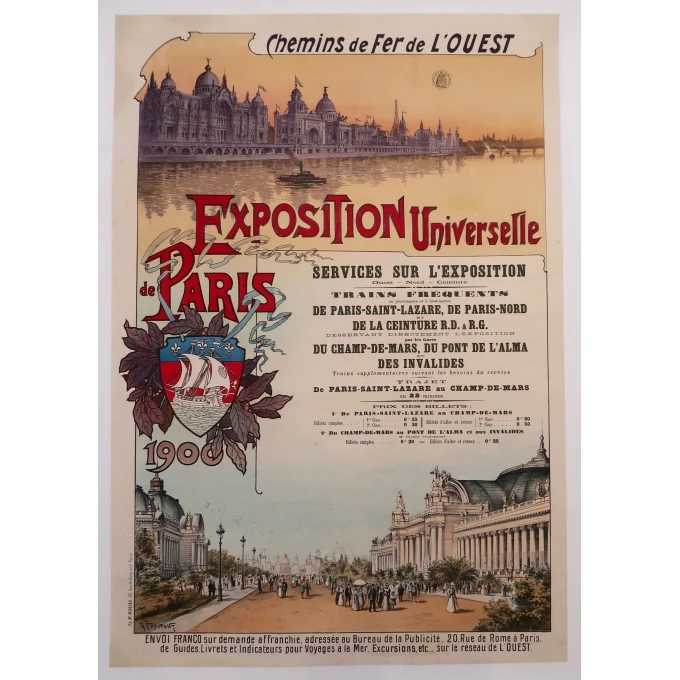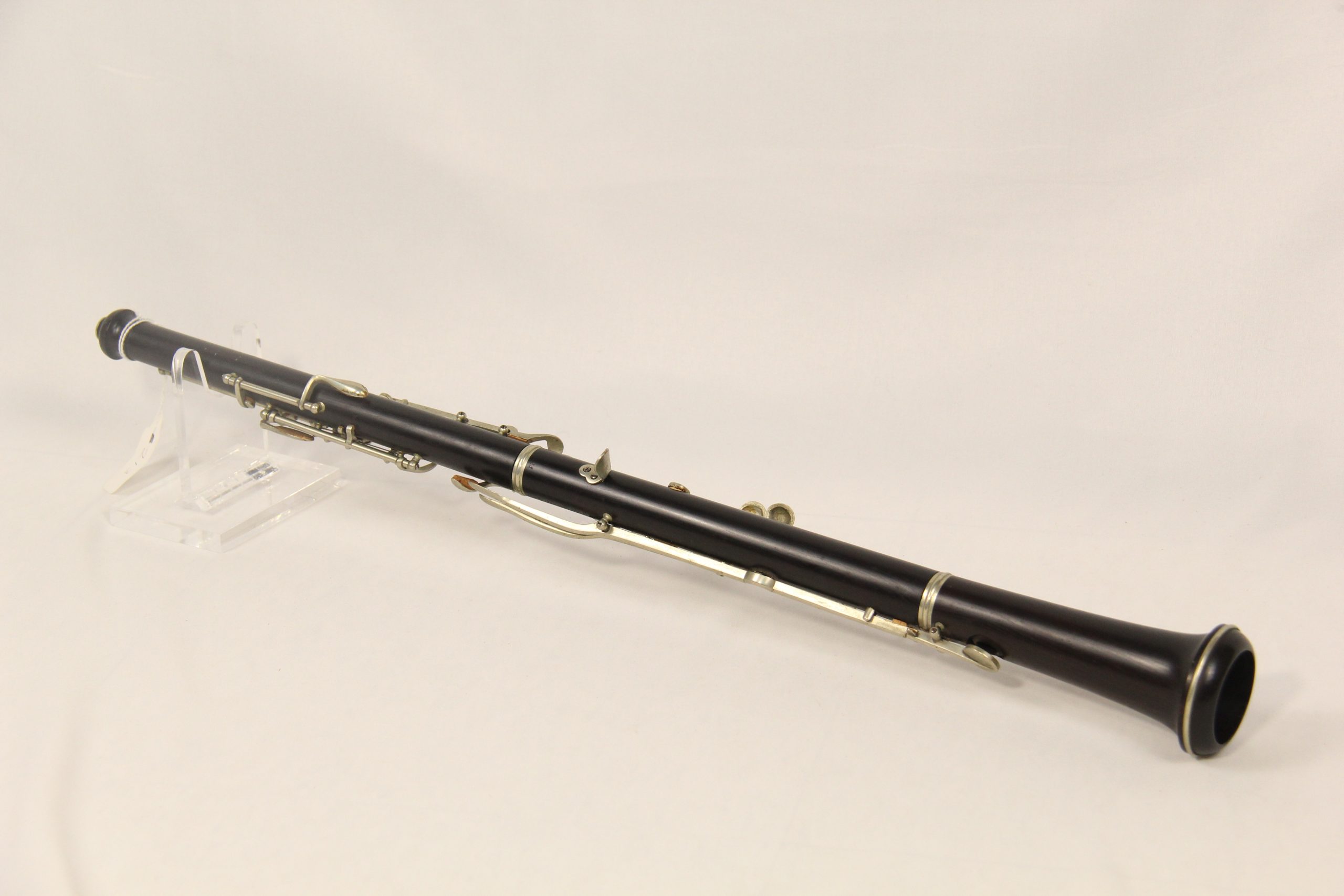Trièbert System 4 Oboe
Details
- Origin: Paris, France
- Date Made: First quarter 20th century
- Maker: Couseson et Cie
- Collection: E 213
Description:
Triebert System 4. 12 flat-cup, German silver keys mounted on pillar and axles. 3 rings and half-hole plate. Single levers for lower joint L-4 keys. Hole for L-3 not double drilled. Range to low B. Material: blackwood with German silver ferrules. Metal-lined sockets. 3 sections. Length: 56.8 cm. Bore: Conical. Bottom upper joint, 1.1 cm; bottom lower joint, 1.5 cm; bell diameter, 3.7 cm. Condition: Excellent. On bell: “EXPOSITION UNIVERSELLE OF PARIS/1900/HORS CONCOURS/MEMBRE DU JURY/COUESNSIN/& Cie/A PARIS/FRANCE.” On top of bottom joitn: “C/LP/FRANCE.” “4” sticker in bell.
Acquired from Silva, Boston.
Guillame Triebert, and his sons Frédéric and Charles-Louis, were prominent makers of oboes in 19th century France. They introduced the first mechanized oboe, dubbed Triebert system 3, in 1840, and in 1843 they developed the model in our collection, called Triebert system 4. Their oboe designs extended the range of the instrument, improved intonation, and stabilized the timbre by reversing the layout of the keys and mechanisms, among other modifications. System 4 was a sort of turning point, as system 3 was still classified by Triebert among the “ancient” instruments; its design was rather simplistic and cheap, it was used more by students than professional performers. System 4 was sometimes called the “conservatory” model, and, most notably, added a new double key for Eb combined with a low b to the system 3 design. This modification, though small, greatly improved the ability and range of the instrument as we know it today.
The “Exposition Universelle of Paris” as listed on the bell of the instrument refers to a world’s fair held in Paris in 1900. This was the last and largest in a series of five fairs held in Paris in the 19th century. The goal was to display and celebrate the world’s achievements of the 1800s at the turn of the century. This instrument was likely shown at the event.

Sources
- Conner, Frances. “1900 Exposition Universelle.” W&L Paris. Accessed June 16, 2022. https://omeka.wlu.edu/wluparis/items/show/33.
- Howe, Robert S. “Nineteenth—Century French Oboe Making Revealed: A Translation and Analysis of the Triebert et Cie ‘1855’ ‘Nouveau Prix-Courant.’” The Galpin Society Journal 64 (2011): 79–194. http://www.jstor.org/stable/23209392.
“Oboe.” Met museum. Accessed June 16, 2022. https://www.metmuseum.org/art/collection/search/506049.
“Poster for the Universal Exhibition of Paris in 1900.” Affiches Anciennes Originales Elbe Paris. Accessed June 16, 2022. https://www.elbe.paris/en/vintage-travel-posters/672-vintage-poster-universal-exhibition-paris-1900.html.









